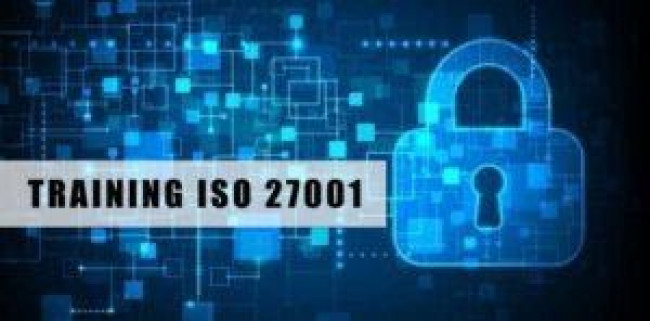ISO 9001 is a quality management system that provides guidance and tools for companies to ensure that their products and services meet the needs of customers and other interested parties. It is important to understand the needs and expectations of these stakeholders in order to implement ISO 9001 successfully. In this blog post, we will discuss the different stakeholders involved in an ISO 9001 implementation and what they expect from the process.
Background of ISO 9001
ISO 9001 is a quality management system that provides guidance and tools for companies to ensure that their products and services meet the needs of customers and other interested parties. It was first published in 1987 by the International Organization for Standardization (ISO), and has been regularly updated since then. The latest version, ISO 9001:2015, was released in September 2015.
ISO 9001 is based on the "plan-do-check-act" cycle, which is a continuous process that helps organizations to identify and address risks and opportunities. The standard is designed to be used by organizations of all sizes, in all sectors, and can be applied to any type of product or service.
Who are the Interested Parties as per ISO 9001?
As per ISO 9001, the term "interested parties" refers to individuals or organizations that may be affected by the activities of an organization. This includes customers, suppliers, employees, shareholders, regulators, and the general public. The standard requires organizations to identify the needs and expectations of their interested parties and to take these into account when planning and implementing their quality management system.
QMS Standard Requirements about the Needs and Expectations of Interested parties
ISO 9001:2015 requires organizations to identify the needs and expectations of their interested parties. These are described in the standard as "requirements that are stated, generally implied or obligatory". This means that they can be explicit (e.g., written down in a contract or specification), implicit (e.g. unwritten customer expectations), or legally required (e.g. by a regulator).
Organizations must take into account the needs and expectations of interested parties when planning and implementing their quality management system. This includes setting quality objectives, designing and implementing processes, and making decisions about resource allocation. The standard also requires organizations to communicate with interested parties about their quality management system and to seek feedback from them on its performance.
Why is it Necessary to Identify and Understand the Needs and Expectations of Interested Parties?
According to clause 4.2 of ISO 9001, organizations are required to determine the “needs and expectations of interested parties that are relevant to the organization’s purpose and that affect its ability to achieve the desired outcomes of its quality management system.”
The identification and understanding of these needs and expectations is essential in order to be able to design and implement a quality management system (QMS) that consistently meets or exceeds the requirements of all interested parties and ultimately contributes to the overall success of the organization. If the needs and expectations of interested parties are not properly identified and understood, it is highly likely that the QMS will fail to meet their requirements, leading to dissatisfaction, mistrust, and potentially even legal action.
How Needs of Different Interested Parties Can Be Identified and Fulfilled?
The needs and expectations of different interested parties can be Identified and fulfilled in a number of ways. One way is to develop a communication plan that outlines how you will keep interested parties informed about your progress in meeting their needs and expectations. This communication plan should identify the methods you will use to communicate with interested parties, who will be responsible for communicating with them, and how often communication will take place. Another way to identify and fulfill the needs and expectations of interested parties is to provide them with opportunities to give feedback on your progress. This feedback can be used to help improve your process for meeting their needs and expectations.
The following are some of the different needs that interested parties may have with regard to an organization’s quality management system:
Customers:
- To receive products and services that meet their requirements
- To be kept informed about the status of their orders
- To be able to provide feedback about the products and services they receive
How to Fulfil These Needs:
In order to fulfil the needs of customers, organizations need to have a clear understanding of their requirements. This can be done through customer surveys, focus groups, or other market research methods. Additionally, organizations need to have a system in place for tracking customer orders and responding to customer feedback.
Employees:
- To have a safe and healthy work environment
- To be trained on the job requirements
- To be able to provide input into the improvement of work methods and procedures
How to Fulfil These Needs: Organizations need to have policies and procedures in place to ensure a safe and healthy work environment. They also need to provide employees with adequate training on the job requirements. Additionally, organizations should encourage employee input into the improvement of work methods and procedures.
Suppliers:
- To be able to provide products and services that meet the requirements of the organization
- To be kept informed about the status of orders
- To be able to provide feedback about the products and services they provide
How to Fulfil These Needs:Businesses need to understand exactly what they need from the goods and services their suppliers provide. This can be done through supplier surveys, audits, or other means of assessment. Additionally, organizations need to have a system in place for tracking supplier orders and responding to supplier feedback.
Regulators:
- To ensure that organizations are following the applicable laws and regulations
- To be able to access the organization’s records and documents
How to Fulfil These Needs: Organizations need to have a clear understanding of the applicable laws and regulations. They also need to have a system in place for maintaining records and documents that is accessible to regulators.
The above are just some examples of the different needs that interested parties may have with regard to an organization’s quality management system.
ISO 9001 Certification – What is It?
ISO 9001 certification is a formal validation demonstrating that an organization has implemented the ISO 9001 standard and meets all of the requirements. Certification is performed by an external organization called a certification body. ISO 9001 certification can be a valuable asset for organizations, as it demonstrates to customers and other stakeholders that they are committed to quality and customer satisfaction.
Conclusion
The requirements for interested parties are important to understand for any organization that wishes to implement ISO 9001. By understanding the needs and expectations of interested parties, an organization can tailor its quality management system to better suit the demands of those groups. Additionally, by involving interested parties in the development and continual improvement of the QMS, organizations can ensure that their QMS is meeting the needs of all stakeholders. Ultimately, by understanding and involving interested parties, organizations can improve their chances of successfully implementing ISO 9001.












